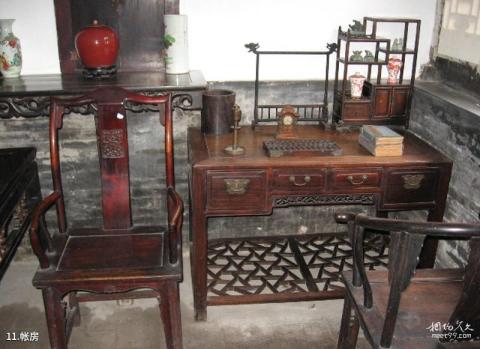
Accounting room introduction: Speaking of Baichuantong, it was once one of the top ten bank accounts in China. It was founded in the 10th year of Xianfeng in the Qing Dynasty (1860) and the 7th year of the Republic of China. It went out of business in 1918. The financial owner was Qixian Canal. The owner of the courtyard is Qu Yuanzhen. The Qu family was founded by Qu Tonghai, the fourteenth generation heir, who made his fortune in grain, oil, tea, and private salt in Baotou and Inner Mongolia. Later, it developed into a silk and satin shop, a bank, and a tea shop. Century of business has accumulated abundant commercial capital, known as "one of the eight richest merchants in Shanxi". After the bank was founded, in memory of this predecessor, it was named after its character "Baichuan", so it was named "Baichuan Tong". It is the hope that "all rivers will lead to the sea, and wealth will roll in, and the water will come naturally, and the flow will never stop." At that time, Baichuantong set up 23 branch offices, and signed guarantees with officials and wealthy businessmen. The exchange of silver was mainly official silver. During the 59 years of operation, the dividend profits were considerable, which can be said to be He is a rising star in China's banknote industry. However, when banknotes were at their peak, Caidong Quyuanzhen believed that things must turn against each other, prosperity must decline, and if there is profit, there will be losses. He felt that banknotes were likely to decline in the future, so in 1902 After the dividends were distributed during the accounting period, all the shares in the ticket account were categorically withdrawn, and the rapid flow of funds retreated, causing the bank's capital turnover to be ineffective. This also became an important factor in the decline of the Baichuan Tong ticket account.
